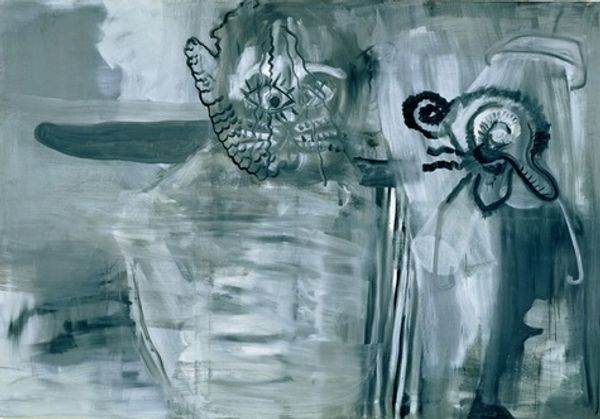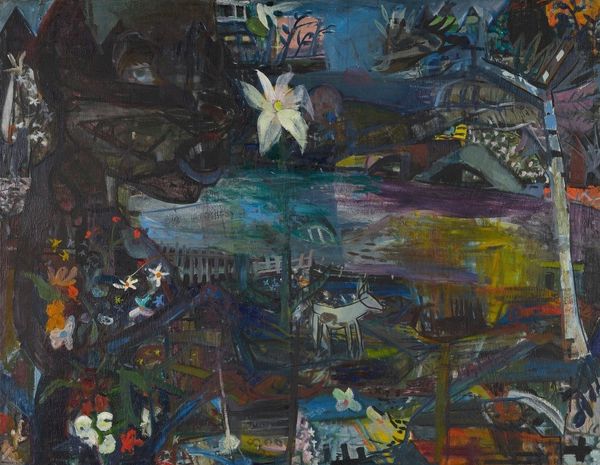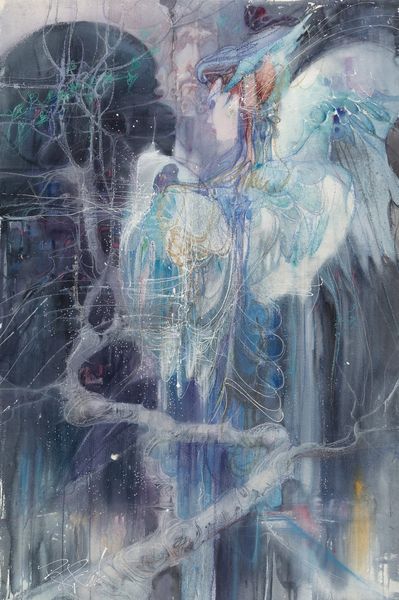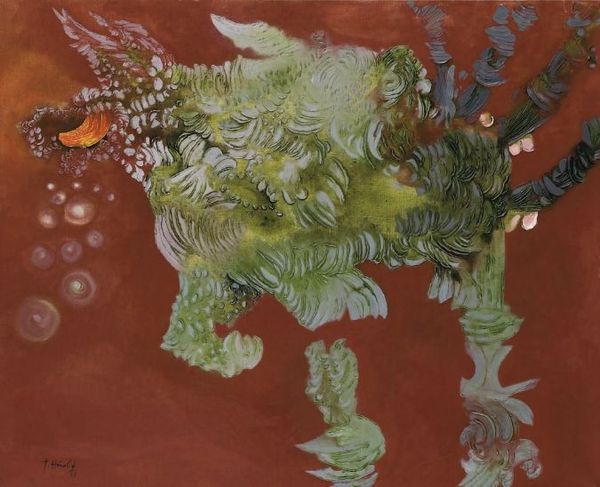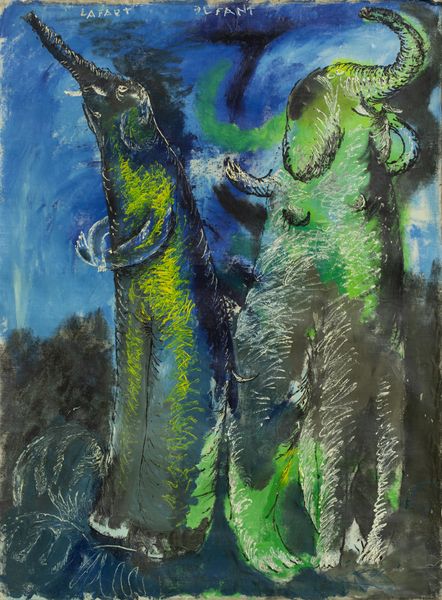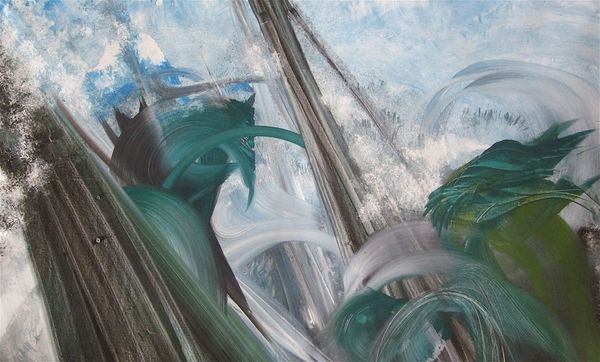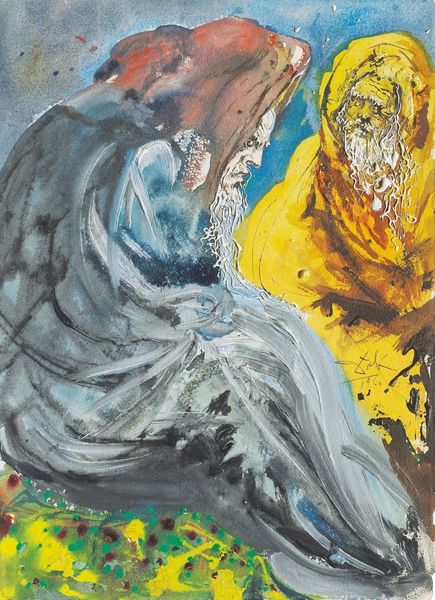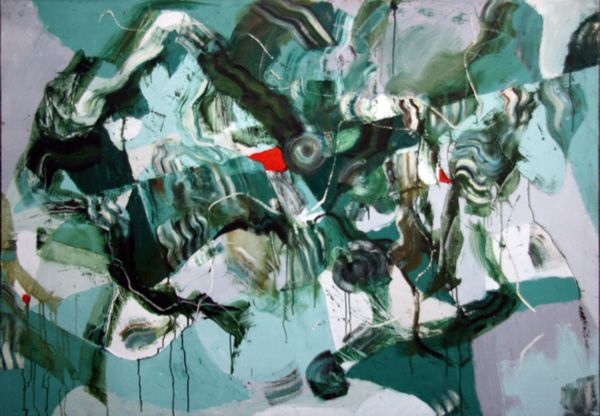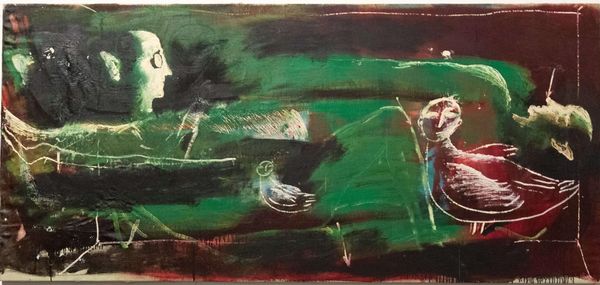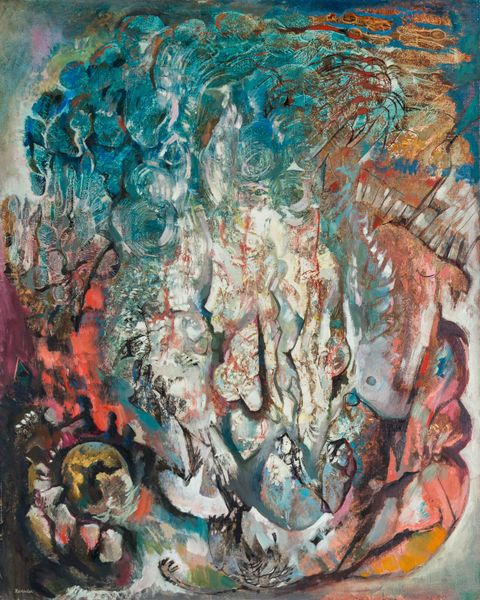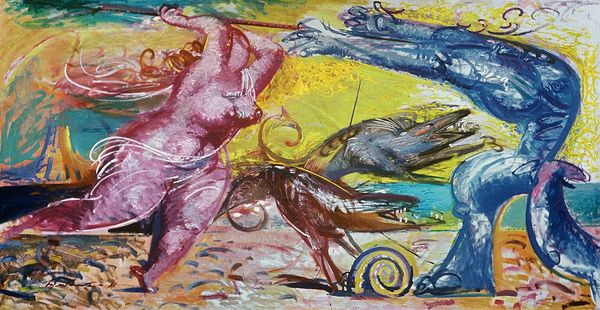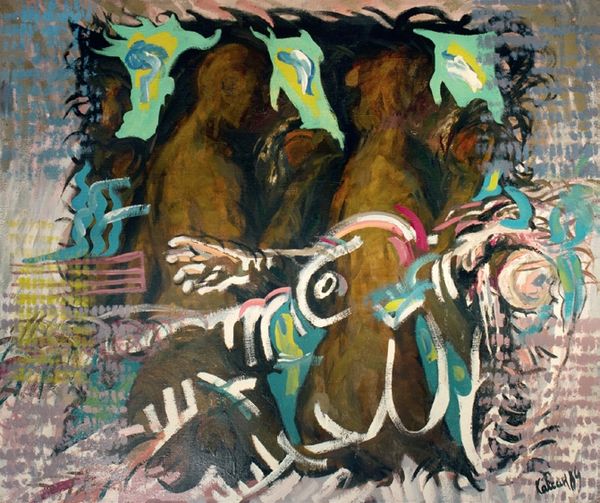
Copyright: Oleg Holosiy,Fair Use
Curator: Looking at this piece, "Tenderness," an oil painting from 1988 by Oleg Holosiy, I'm immediately struck by how dreamlike it is. There’s this peculiar stillness, almost a melancholy. What are your initial thoughts? Editor: The initial application of pigment suggests something urgent and visceral. Holosiy lays down these broad swathes of greens and blues, creating a composition that denies any formal clarity, favoring expression. Curator: And the figures! Are they figures? That pale form to the left seems almost larval, embryonic. There’s something very primal here, wouldn’t you agree? These forms evoke images from our collective visual unconscious, reaching back to foundational anxieties. Editor: The use of contrasting, impasto strokes suggests the work's underlying structure as a dynamic field of opposing tensions, pushing at and resisting the flatness of the picture plane. It almost undermines a fixed reading, as such. Curator: Perhaps it’s intended to remain unresolved. It’s called "Tenderness" after all, and that is a fleeting, unstable feeling. Notice the lunar orb in the mid-ground; throughout history, the moon has been a symbol of both nurture and madness. Its duality seems fitting for the overall emotional tenor of this piece. Editor: I concur about its ambivalence. This central element of Holosiy's language has the same consistency across the entire surface— the very lack of finish unites the individual elements, making the interpretation of them open-ended, as you were suggesting. Curator: Exactly. He gives us symbols and gestures without clear meaning. The work reflects our desire for connectedness through remembered shapes. As humans, we create and then grapple with those creations. In essence, this expressionist piece appears to consider the roots and branches of visual language. Editor: Looking closely at Holosiy’s work reveals the tensions between spontaneous creation and pictorial structure. This has given me an unexpected approach for thinking through visual composition.
Comments
No comments
Be the first to comment and join the conversation on the ultimate creative platform.

